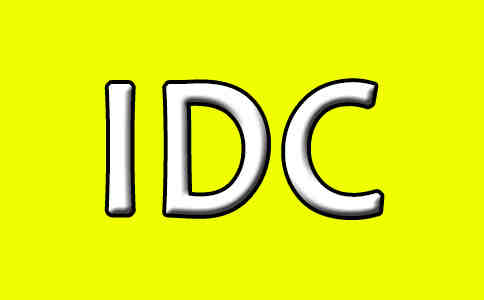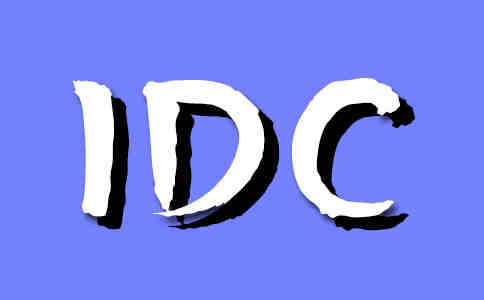As global digital transformation continues to accelerate, more and more businesses and individuals are opting to rent foreign IDC (Internet Data Center) servers to meet their needs. Compared to domestic servers, foreign IDC servers have advantages in bandwidth, stability, privacy protection, and more. Therefore, selecting the right foreign IDC server configuration has become an important consideration for many users.

This article provides a comprehensive guide to help you choose the most suitable server configuration based on your needs, ensuring the stable operation of your website or application.
1. Understand the Different Types of Foreign IDC Server Configurations
When selecting a foreign IDC server, it is crucial to understand the types and configurations of servers. This will help you better match your business needs and budget. Below are some common server types and configurations:
1.1 Basic Servers
Basic servers are generally suitable for personal blogs, small business websites, or low-traffic applications. They typically have lower configurations and are ideal for scenarios that don't demand high performance. The configuration usually includes:
- CPU: 1-2 cores
- Memory: 2-4GB
- Storage: 20GB-50GB
- Bandwidth: 1Mbps-5Mbps
For users on a budget with relatively low demands, a basic server is an affordable choice, usually priced between $20 and $50 per month.
1.2 Mid-Range Servers
Mid-range servers are suitable for medium-sized businesses or websites with moderate traffic. They offer more processing power and larger storage capacity, making them ideal for running e-commerce platforms, blogs, and data analysis applications. Typical configurations are:
- CPU: 4-8 cores
- Memory: 8-16GB
- Storage: 500GB or more
- Bandwidth: 10Mbps-100Mbps
The price typically ranges from $80 to $200 per month. These servers are well-suited for users who need higher processing power and more storage.
1.3 High-Performance Custom Servers
High-performance custom servers are designed for large enterprises or users with specific needs. These servers usually offer powerful computing resources and high availability, making them suitable for big data processing, high-traffic websites, and AI applications. Typical configurations include:
- CPU: 16 or more cores
- Memory: 32GB or more
- Storage: 1TB or more
- Bandwidth: 100Mbps or more
The cost typically ranges from $300 to over $1000 per month, making them suitable for users requiring high performance and highly customized configurations.
1.4 Cloud Servers
Cloud servers are virtual servers based on cloud computing technology, providing elastic scalability and pay-as-you-go pricing. The advantage of cloud servers is that they can adjust configurations based on actual traffic demands, making them ideal for businesses with fluctuating traffic. Pricing is typically based on resource usage, ranging from $30 to $500 per month, offering high flexibility.
2. Factors to Consider When Choosing a Server Configuration
When selecting a foreign IDC server configuration, in addition to performance, there are other important factors to consider.
2.1 Business Needs and Traffic Forecast
First, it is essential to clarify your business needs and traffic forecast. If you are only running a simple personal blog or small website, a basic server will suffice. However, if you plan to launch an e-commerce platform or a service targeting a global audience, you will need a more powerful server configuration to ensure fast loading times and stability.
2.2 Server Location
The geographic location of the server directly affects the website's access speed and stability. Choosing a data center closer to your target audience can reduce network latency and improve website access speed. For example, if your main user base is in Europe, selecting a data center in Europe would be more advantageous.
2.3 Bandwidth and Network Stability
The bandwidth size determines the amount of data traffic a server can handle. Choosing the right bandwidth configuration can prevent bottlenecks that lead to slow website loading times or access interruptions. For applications with heavy traffic, it is recommended to choose servers with higher bandwidth to ensure smooth access.
2.4 Scalability and Future Growth
As your business grows, the traffic to your website or application may increase rapidly. Therefore, choosing a server with good scalability is critical. Cloud servers typically offer excellent scalability, allowing you to dynamically adjust resources as needed. Physical servers, on the other hand, may require you to consider future expansion needs to avoid resource bottlenecks down the road.
2.5 Security and Technical Support
Security is a crucial consideration when choosing a server, especially for applications involving user data and transactions. Selecting an IDC service provider that offers robust security measures (such as DDoS protection, data encryption, etc.) can help ensure your website’s security. Additionally, the quality of the provider's technical support and after-sales service is an important factor in server selection to ensure any issues are resolved quickly.

3. Conclusion
When choosing a foreign IDC server configuration, it is important to decide based on your specific needs and budget. Basic servers are sufficient for small websites or personal applications, while more powerful servers are needed for medium-to-large enterprises or high-traffic applications. Regardless of the server type, factors such as performance, bandwidth, server location, security, and scalability must be considered to ensure your server runs stably and efficiently.
By fully understanding the characteristics of different server configurations and their applicable scenarios, you can make the most appropriate choice to ensure your website or application runs smoothly on a global scale, providing a good user experience.
